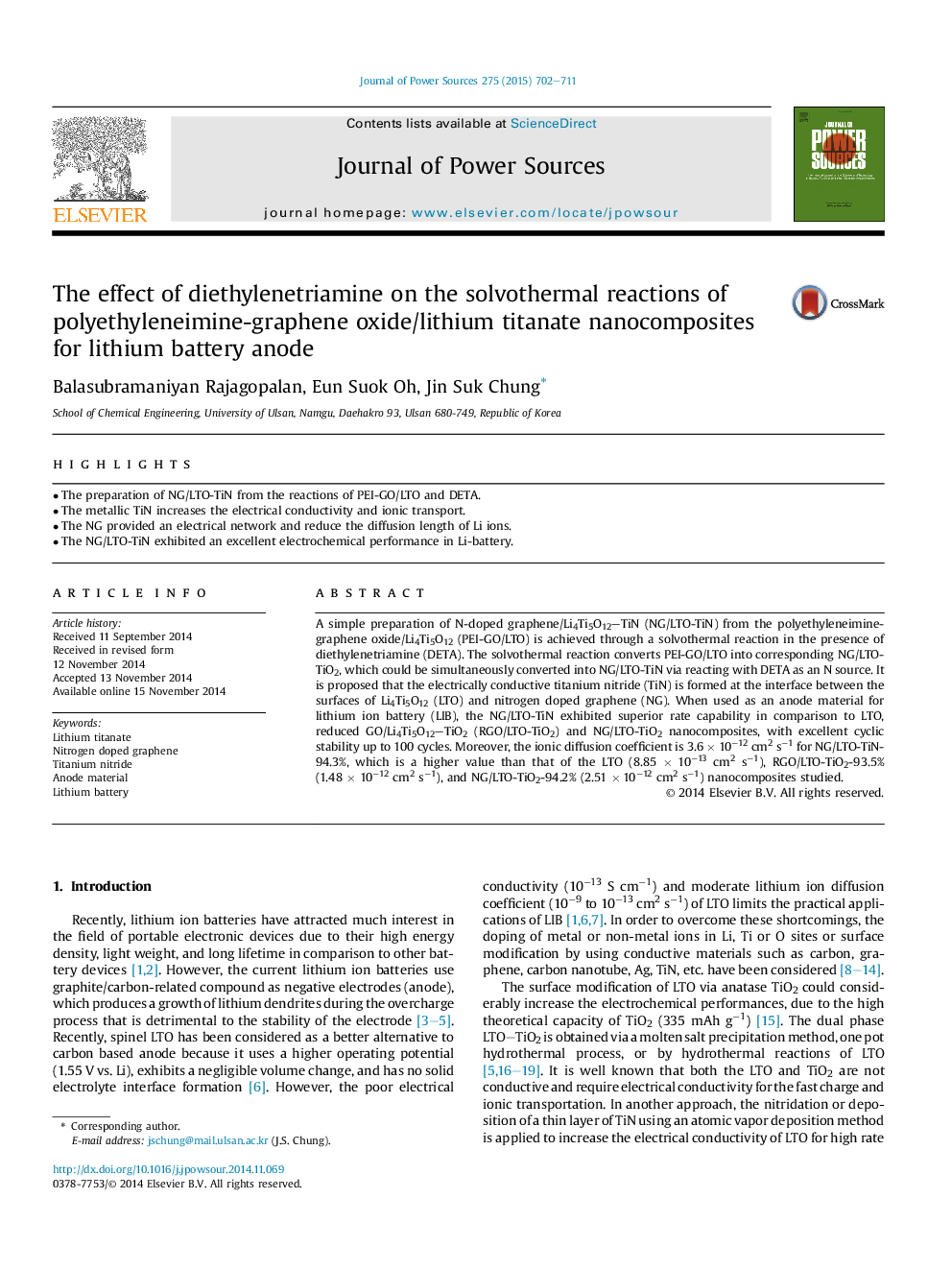| Article ID | Journal | Published Year | Pages | File Type |
|---|---|---|---|---|
| 7734667 | Journal of Power Sources | 2015 | 10 Pages |
Abstract
A simple preparation of N-doped graphene/Li4Ti5O12-TiN (NG/LTO-TiN) from the polyethyleneimine-graphene oxide/Li4Ti5O12 (PEI-GO/LTO) is achieved through a solvothermal reaction in the presence of diethylenetriamine (DETA). The solvothermal reaction converts PEI-GO/LTO into corresponding NG/LTO-TiO2, which could be simultaneously converted into NG/LTO-TiN via reacting with DETA as an N source. It is proposed that the electrically conductive titanium nitride (TiN) is formed at the interface between the surfaces of Li4Ti5O12 (LTO) and nitrogen doped graphene (NG). When used as an anode material for lithium ion battery (LIB), the NG/LTO-TiN exhibited superior rate capability in comparison to LTO, reduced GO/Li4Ti5O12-TiO2 (RGO/LTO-TiO2) and NG/LTO-TiO2 nanocomposites, with excellent cyclic stability up to 100 cycles. Moreover, the ionic diffusion coefficient is 3.6Â ÃÂ 10â12Â cm2Â sâ1 for NG/LTO-TiN-94.3%, which is a higher value than that of the LTO (8.85Â ÃÂ 10â13Â cm2Â sâ1), RGO/LTO-TiO2-93.5% (1.48Â ÃÂ 10â12Â cm2Â sâ1), and NG/LTO-TiO2-94.2% (2.51Â ÃÂ 10â12Â cm2Â sâ1) nanocomposites studied.
Related Topics
Physical Sciences and Engineering
Chemistry
Electrochemistry
Authors
Balasubramaniyan Rajagopalan, Eun Suok Oh, Jin Suk Chung,
